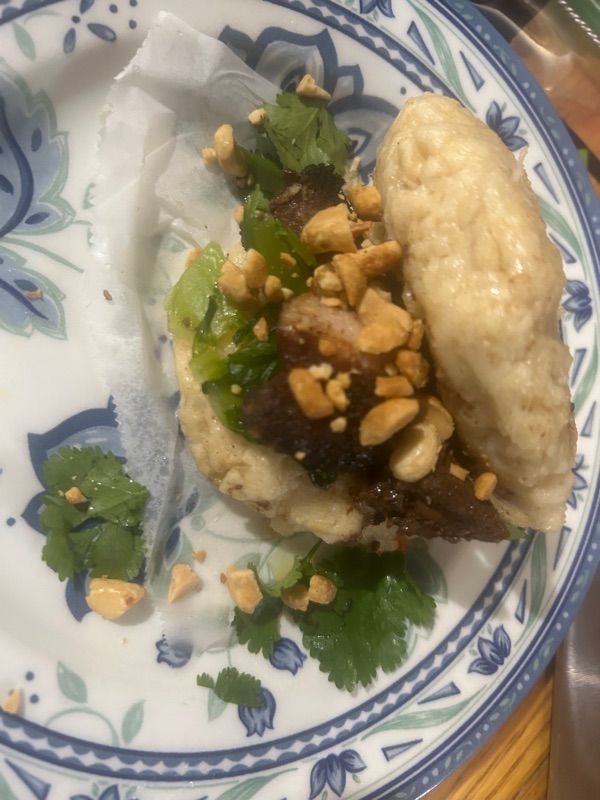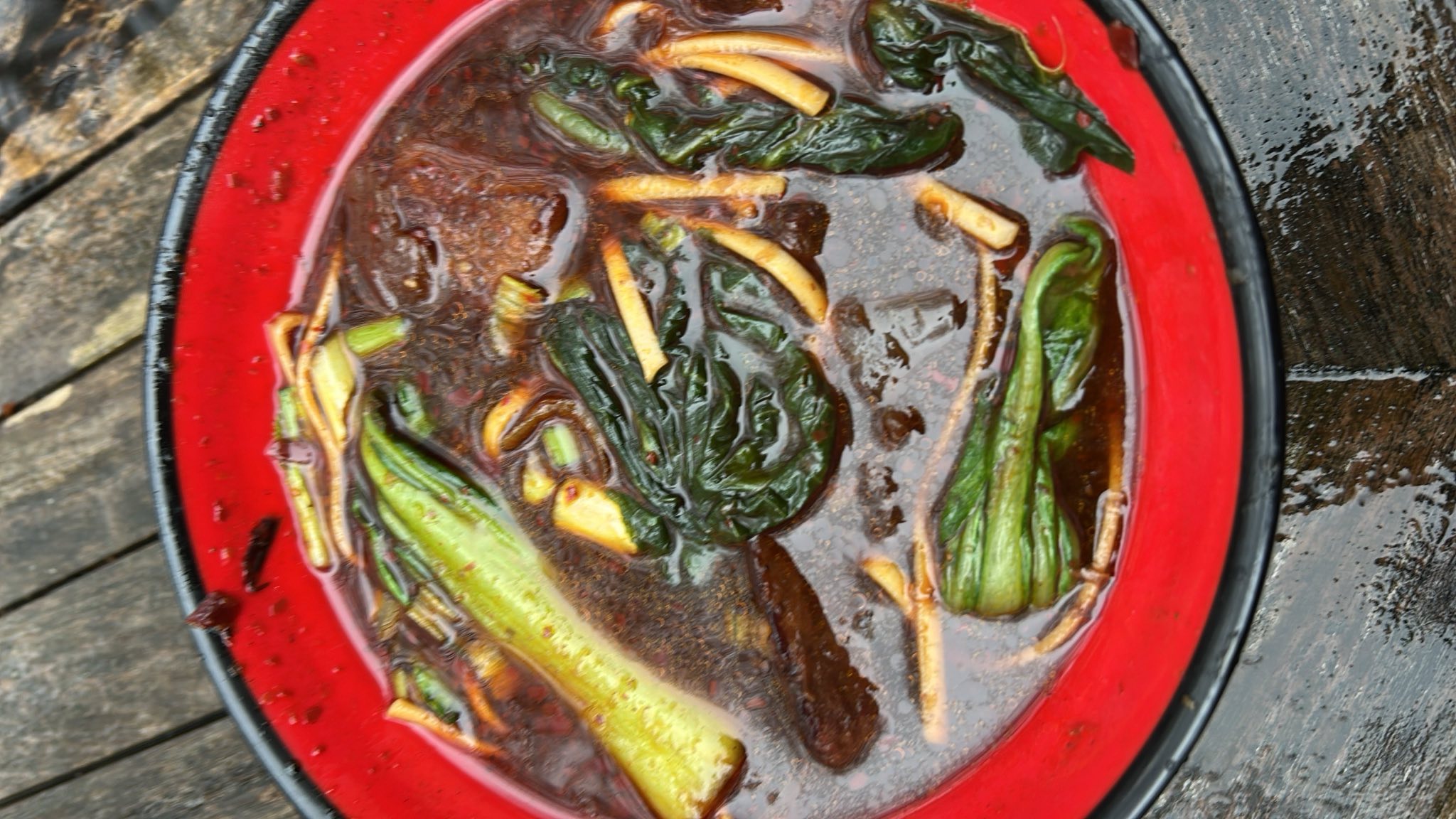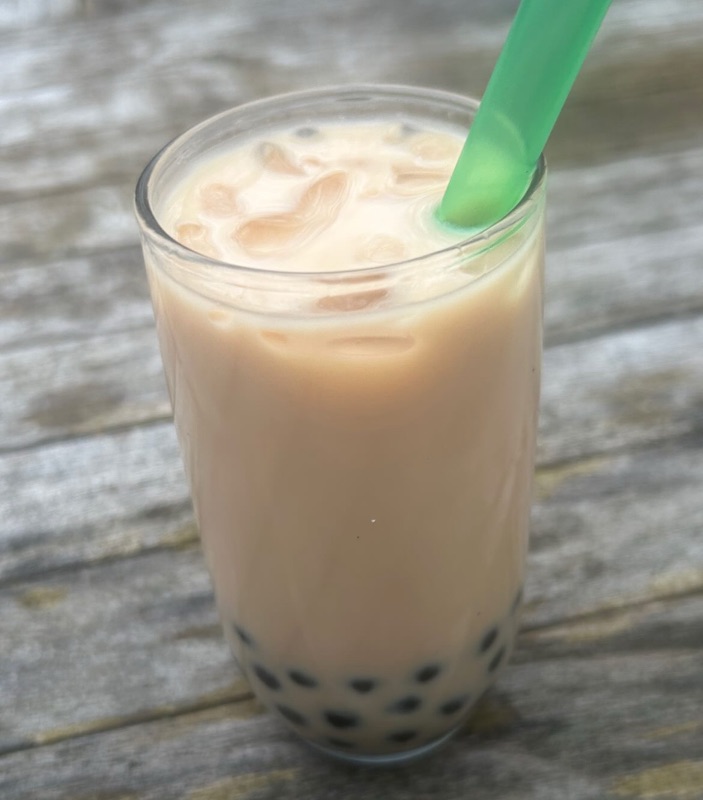China, Pt. 3 (Taiwan): Across the Great Divide
China, Pt 3 (Taiwan): Across the Great Divide
Taiwan doesn’t exist. At least not on paper. The People’s Republic of China considers it part of its territory, and won’t allow any country who establishes relations with the government on Taiwan to have relations with it as well. Countries in the West, like the US, won’t acknowledge the Taiwanese government’s legitimacy, even while having Taiwan as one of its largest trading partners. Even Taiwan’s own government, which styles itself “The Republic of China”, considers Taiwan to be a miniscule part of its rightful territory, a sprawling area which includes the entirety of mainland China, and some places outside China such as Mongolia.Off paper, Taiwan is an independent entity that has been governed by the pre-revolutionary Republic of China since retreating there after the Chinese Revolution at the end of the 1940s. Of course, this status is constantly under threat. Changing status is nothing new for the island of Taiwan, once the Dutch colony known as Formosa which also passed to Spanish and Japanese hands, and was used as a staging ground for rival dynasties to seek revenge on each other. If our mainland Chinese exploration was that of peasants and revolutionaries, and Hong Kong was urban strife and dual identities, our journey into Taiwanese cuisine will be looking at the flavors of survivors and exiles. Those who survived occupation, a revolution, a military dictatorship, and who continue to survive to this day.We will be looking at gua bao, a dish from the mainland adopted and claimed by exiles facing a brutal new dawn; beef noodle soup, a simmering rich cauldron of flavor originally brewed by military officers but adopted by working people resisting decades of terror, from Kaohsiung’s streets to a nation’s defiance; and boba tea, a drink full of youthful exuberance that rose out of the ashes of dictatorship to become a global icon. Let’s dig in.
Gua Bao (刈包): Open Faced Brutality

For centuries, Taiwan’s cuisine has drawn from the mainland, especially Fujian’s southern shores. Steamed bao buns took root, evolving into the open-faced, lotus-style gua bao—Taiwan’s “hamburger.” Stuffed with pork belly, topped with cilantro, mustard greens, and crushed peanuts, it became a night-market and temple-side staple, a symbol of Taiwanese identity forged under occupiers’ boots.One such occupier was Japan, who seized Taiwan in 1895 and industrialized it ruthlessly until their 1945 expulsion. Unlike the Mainland, hit by Japan in WWII, Taiwan had known only dynasties and colonizers—never self-rule. When Chiang Kai-Shek’s Kuomintang (KMT, from our Mainland China tale) arrived post-war, locals cheered the return of Chinese rule. But joy turned bitter fast. Natives were barred from office, their property seized, their labor exploited to fuel the KMT’s failing war against Mainland communists. Clutching their gua bao, they watched mainlanders unload boxes with the scorn once aimed at foreign overlords.On February 27, 1947, KMT police struck a Taiwanese widow in Taipei, accused of peddling contraband cigarettes. A crowd gathered; a cop fired, killing a bystander. Protests flared. Police shot more civilians, swelling the unrest. A captured radio station broadcast the deaths island-wide, igniting Taiwan. The KMT crushed the uprising—later dubbed the “228 Incident”—with 18,000 to 28,000 dead. In the smoky aftermath, gua bao stalls fed survivors, whispering rebellion against the KMT’s grip. It stood apart from the spicy, northern dishes mainlanders brought, a quiet claim to local pride.The irony? As independence sentiment sprouted, the Republic of China lost the Mainland to communists in 1949. The KMT fled to Taiwan, entrenching itself and vowing no more uprisings like 228. Gua bao endured—a taste of survival amid exile and brutality.What didn’t endure when I made Gua bao was hunger, as the pork belly melted in my mouth and the open faced bao bun really hit the spot. Luckily, I had leftover dough from Hong Kong’s baozi and leftover raw pork belly from Mainland’s red braised pork, and leftover peanuts from Kung Pao Chicken, which made this a particularly cheap entry for me in our culinary calendar. One word of advice: when creating the bun, flatten it, spread a tiny bit of oil on some chopsticks, and place a piece of parchment paper on one half. Use the oiled sticks to grab the half of bun and fold it on top of the piece of parchment paper. This will keep the opening intact when you go to steam and stuff it.
• Gua Bao Recipe
• Serves: 2-3 (4 Buns)
• Ingredients:
• Dough:
• 1⅓ cups all-purpose flour
• ¾ tsp instant yeast
• 2 tsp sugar
• ⅓ tsp baking powder
• ½ cup warm water (~110°F)
• 2 tsp vegetable oil
• Pork:
• ½ lb pork belly (½-inch slices)
• 1.5 tbsp soy sauce (light)
• ¾ tbsp hoisin sauce
• ¾ tsp five-spice powder
• ¾ tbsp Shaoxing wine
• ¾ tsp sugar
• ⅓ cup water (for braising)
• Toppings:
• 1.5 tbsp crushed peanuts
• 1 tbsp cilantro (chopped)
• Mustard greens (optional, ~¼ cup, chopped)
• Instructions:
• Slice ½ lb pork belly (½-inch thick). Mix marinade (soy, hoisin, five-spice, Shaoxing, sugar) and coat pork, seal in a ziplock and in the fridge overnight.
• Dough: Mix flour, yeast, sugar, baking powder—add warm water, oil. Knead 5-10 mins (smooth, tacky). Let Rest 1 hour until it doubles in size.
• Divide into 4 (~60-70g each), roll into ovals (5x3 inches, ~11:05-11:15 PM), brush with oil or oil chopsticks, fold over parchment strip, rest 30 mins.
• Braise pork—heat pot (medium), add pork with marinade + ⅓ cup water. Simmer 45-50 mins (tender, sauce thickens). Cool slightly, fridge in container.
• Steam buns—12-15 mins (steamer, parchment under, ~212°F boiling water).
• Assemble: Open buns, add pork, sprinkle peanuts, cilantro, mustard greens (if using).
Beef Noodle Soup (台灣牛肉麵): Simmering Resistance

When the Kuomintang relocated from the mainland in 1949, they brought with them much of Mainland China’s national wealth, a large array of military forces, and Northern culinary traditions. Military veterans, most of whom were based in the South, would try to recreate the spicy noodle soups they were used to from the northern part of the Mainland using more local ingredients. This would create a uniquely Taiwanese version of Beef Noodle Soup. This would lead to Taiwan quickly becoming one of the most densely populated places in the world, pushing the entire island into a cauldron simmering with unrest under the surface, not unlike the slow cooking nature of beef noodle soup.Wary of the 228 incident, the Kuomintang had instituted a brutal military dictatorship led by Chiang Kai-Shek, a period known within Taiwan as the “White Terror”. Over 3,000 would be executed by the government and 140,000 would become political prisoners. The dictatorship would persist for decades while Taiwan’s own status would wane in the eyes of the world.Beef noodle soup would quickly spread from the military to the average working person, being something relatively inexpensive to make that could simmer for hours while someone was at work. It’s rich notes of anise, ginger, and soy complimented the beef perfectly, and vendors popped up throughout the urban centers of Taiwan selling it.The urban center most associated with the new dish was Kaohsiung, a southern port city, and one that had become the seat of the largest opposition to the Kuomintang regime, something that would come to a head in 1979.The 1970s had been a bad decade for Kuomintang rule. In 1971, the US Nixon Administration would push the UN to recognize the People’s Republic of China as the official legitimate government of China, reducing the ROC government of Taiwan to a non-state actor in the UN. It responded by doubling down on the White Terror, accusing any sort of political opposition as communist infiltration and arresting them. In 1975, a magazine was founded by opponents of the Kuomintang called Taiwan Political Review. Those in support of democracy would start to gravitate towards that magazine and form an organization called Tangwai, “outside the party”. In 1976, the magazine lost its publisher’s license, but this didn’t stop Tangwai from running in the 1977 elections (a sham because they didn’t really do anything, but still a demonstration of their growing strength). In 1978, the US Carter administration ended the US’s official relationship with the Republic of China over human rights concerns. This set the stage for the biggest clash on Taiwan since the 228 incident.The ROC government started arresting all associated with Tangwai, falsely accusing them of spreading communist propaganda, abetting mafia members to attack publishers offices. The magazine tried to hold a Human Rights Day rally on December 10, 1979, but was denied a permit to do so anywhere but their main office in Kaohsiung. They tried to get the word out via mobile speaker the day before on December 9, but the speakers were held up, and many manning them were brutalized and arrested. This led to those who were on the fence to swing towards supporting Tangwai in big numbers.On December 10, 1979 over the smell of the simmering beef noodle soup stalls that were set up to feed demonstrators, Taiwan’s largest pro-democracy demonstrations since the Kuomintang relocated had begun. They were quickly shut down, and all who were then tangentially involved were arrested. However, cracks in the armor were starting to show, and this would become regarded as a seminal moment of the democratization of Taiwan, with Tangwai being a spiritual predecessor of the Pan-Green movement, the movement that supports both democracy, and a Taiwan independent of its fixations of reclaiming the mainland. Much like the slow simmering dish of Beef Noodle Soup, Taiwan was letting the flavor of democracy soak in, and it would only be a matter of time.When I made beef noodle soup, I found it to be an amazingly flavorful dish, with my kitchen smelling sweet and spicy while it was cooking. You can use any wheat noodle. I used Udon myself.
• Beef Noodle Soup Recipe
• Serves: 2-3
• Ingredients:
• 300g stew beef (1-inch chunks)
• 1 tbsp neutral oil (e.g., vegetable or canola)
• 1 onion, quartered
• 2 slices fresh ginger
• 2 garlic cloves, smashed
• 1 star anise
• 1–1½ tbsp chili paste with soybean oil (adjust for heat)
• 1 tbsp Sichuan chili crisp
• 2 tbsp dark soy sauce
• 1 tbsp Shaoxing wine
• 1 tsp sugar
• 4 cups beef broth
• 200g dry wheat noodles (e.g., udon)
• 1 cup bok choy (halved or quartered if large)
• 1 scallion, thinly sliced (garnish)
• Instructions:
• Blanch bok choy: Boil water in a medium pot. Add bok choy, blanch 1-2 mins until bright green and tender. Drain and set aside.
• Brown beef: Heat 1 tbsp oil in a large pot or Dutch oven over medium-high. Sear beef chunks 5-7 mins until browned, working in batches if needed.
• Add aromatics: Reduce to medium. Add onion, ginger, garlic, and star anise; cook 2 mins until fragrant.
• Spice it up: Stir in chili paste and chili crisp; cook 1-2 mins to bloom flavors.
• Build broth: Add soy sauce, Shaoxing wine, sugar, and beef broth. Bring to a boil, skim foam, then simmer on low, partially covered, for 2 hours until beef is tender.
• Cook noodles: Boil water in a separate pot. Cook noodles 8-10 mins (per package), drain, rinse under cool water to prevent sticking.
• Assemble: Divide noodles and bok choy into bowls. Ladle hot broth and beef over top. Garnish with scallions. Serve hot.
Boba Tea (珍珠奶茶): Pearls of Renewal

In 1987, under immense international and homegrown pressure, martial law had ended. Of course, one party rule by the Kuomintang remained. But, it was only a matter of time. In the 1980s, a different type of revolution was also gripping Taiwan. Taiwan was identified as one of the “Asian tigers”, small Asian countries who became electronics hubs and economic powerhouses as the world economy globalized.On the back of this, local tea houses popped up, serving trendy new sweet drinks to Taiwan’s restless, tech-savvy students, and working class that was starting to specialize in electronics manufacturing. One of these tea shops (either in Taichung or Tainan. There is a debate), started adding tapioca pearls introduced from Southeast Asia to milk tea, creating a tea with “bubbles” that appeared in the bottom. The popularity of the new drink exploded, spreading not just to the rest of Taiwan, but becoming a worldwide phenomenon, reflecting Taiwan’s new globalized presence. Another thing that was exploding was the clamor for democratic reform.
Under the political system that was in place post-martial law, the president was elected by the members of the National Assembly only. While the on-paper intent was to act as sort of an electoral college, the National Assembly had members representing not only members of the districts on Taiwan, but members representing the districts of Mainland China and Mongolia that the Kuomintang government claimed to have legitimate control over. Since these regions were “in rebellion” (part of the PRC), elections had not been held for these seats since 1947 and the people in those seats had held them since then, making a majority of the seats in this body not elected. Those who were not were were designated “Senior Congresspersons”, and the images that Taiwanese people saw during the electoral proceedings of the National Assembly in 1990 were the “Senior Congressmen” who held the balance of power in the chamber wheeled in holding urine bags and hooked up to oxygen tanks to give the only candidate in contention, incumbent Kuomintang president Lee Teng-hui, their vote. Tangwai media started calling them the “10,000 year Congress”.
In the milk tea shops slinging boba that had been popping up all around Taipei, students began to take notice. One particular group of students all wore white Formosa Lillies, long a local symbol of resilience, and staged a sit in at Taipei’s memorial square, demanding direct elections for the president and dubbing themselves “The Wild Lilly Movement”. Soon the demonstrations swelled to 22,000 participants. Boba carts set up in the park, with demonstrators sipping on the drinks between chants. After six days, the demonstrators were invited to meet with the president. Lee Teng-hui agreed to hold new elections for the National Assembly in 1991, forcing the “senior congressmen” to resign, and direct election of the president in 1996. The National Assembly itself was abolished in the early 2000s, its functions being transferred to Taiwan’s local legislature.
Since then, presidential control has switched between the centrist Democratic Progressive Party, the social liberal party most associated with the Pan-Green coalition who wants to see an independent Taiwan, and the Kuomintang, who remains as a right wing nationalist party whose Pan-Blue coalition dreams of getting Mainland China back under the control of the Republic of China. Whatever direction the people decide, one must always remember that six days was what it took to topple a dictatorship that had been in place for decades. Pearls of hope exist everywhere if you look for them.
My pearls of hope could be found in the bottom of my cup of boba, which has been one of my favorite drinks for a long time. It is very easy to make. For sweetener you can either make simple syrup, or do what I did and take the warmed tapioca pearls and toss them in a bowl with brown sugar. The sugar will melt, and coat the pearls in a nice sweet covering.
• Boba Tea Recipe
• Serves: 1-2
• Ingredients:
• Pearls:
• ½ cup dried tapioca pearls (~80-100g)
• 4 cups water (for boiling)
• 2 tbsp brown sugar
• Drink:
• 1 cup brewed black tea (e.g., Assam or Ceylon, cooled)
• ¼ cup milk (whole, oat, or omit for black tea version)
• 1-2 tbsp sugar (adjust to taste)
• ~1 cup ice
• Instructions:
• Cook pearls: Boil 4 cups water in a medium pot. Add tapioca pearls, stir to prevent sticking. Cook 20 mins until soft and chewy (test one), then steep off heat 10 mins. Drain, mix with brown sugar in a bowl until syrupy.
• Prep drink: Brew tea (steep 1-2 tsp leaves in 1 cup hot water 5 mins, cool) or use pre-made. In a glass, mix tea, milk, and sugar; stir until dissolved. Add ice.
• Assemble: Spoon 2-3 tbsp pearls into the glass, pour tea mix over. Stir and serve with a wide straw.
• Tips: Cook pearls fresh—they harden if left too long.




Comments
Post a Comment